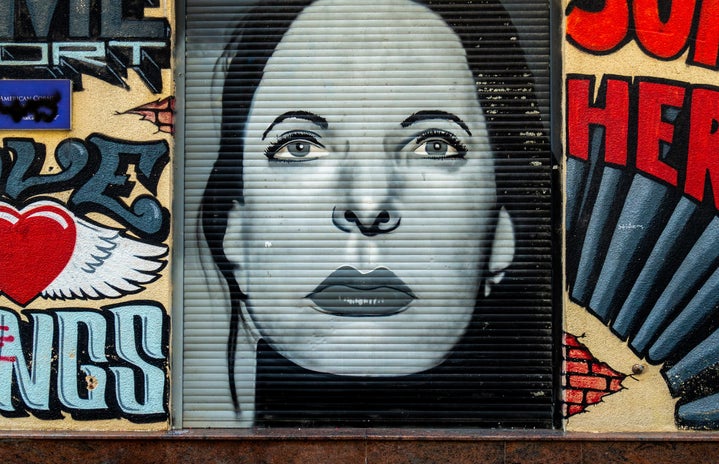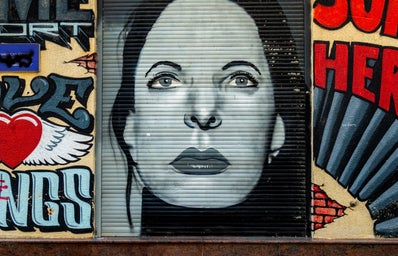The opulence of MoMa (The Museum of Modern Art) – with its sky-high ceilings and wide white walls – intimidates most who enter its doors. Sitting in the middle of one of the halls while hundreds watch sounds unimaginable. Not for Marina Abramović. Twelve years ago, the artist spent over 700 hours there over a three-month period. In front of her was an empty chair where any visitor of the museum could sit.
To better understand the dimension of this performance and the importance of the artist in the international art scene, one must know her background. Marina Abramović was born in Belgrade, Serbia, in 1946, and grew up with her grandmother until she was six years old, as her parents were supporters of the Yugoslav anti-fascist leadership.
Graduated and postgraduate at the Faculties of Fine Arts in Belgrade and Zagreb, Marina Abramović always wanted to become an artist, but because her mother was very strict, it was difficult at first. In an interview with The Guardian, Abramović stated that during her first and one of the most dangerous performances, Firestar – in which she lay in the middle of a burning star – she had to go home at 10:30 p.m. on her mother’s orders. After Firestar, Marina’s career was marked by unusual performances that pushed all known limits of body and mind to the extreme.
To help better understand the complex dynamics of Marina Abramović’s work, in this article, her trajectory was divided into three categories: Rhythm Series, Works with Ulay and Post The Lovers.
Rhythm Series
Her first series of works, created over a two year period, consists of five solo performances. The works Rhythm 10 and Rhythm 0, characterized by a high level of danger and mental and physical exhaustion, are essential pieces of the complex puzzle that is Abramović’s mind.
- RHYTHM 10 (1973)
-
In order to explore the artist’s psychological and physical limits and analyze the concept of replication, Marina played the knife game, originally called “the Russian game”, with 20 knives arranged on a table next to her. Each time she missed and hit the space between her fingers, the performer switched blades. To investigate the repetition, after being stabbed by all the knives, the performer rewound the tape on which the entire act was recorded and tried to replicate all the movements.
- RHYTHM 0 (1974)
-
Rhythm 0, one of the artist’s best-known projects, has this recognition of the physical limits she has set. Marina placed 72 objects, including scissors, knives, and a gun with a projectile, on a table. She remained motionless in the room for about six hours. The instructions given to the audience were to use any available material. At first, the audience placed a rose in her hand and a hat in her hair.
Over time, her humanity was lost as she did not move, walk or protest. At the end of the performance, several cuts with rose thorns, knives, and scissors had been made on her body and pieces of her hair lay on the floor. Her clothes were also removed and the gun with the projectile was pointed at her head. The aim of the artist was to see how far the human mind can go, as in this room she was not seen as an individual, but as an object.
Marina Abramovic on performing “Rhythm 0” (1974)
Works with Ulay
From their first meeting, Marina and the artist and photographer Uwe Laysiepen, better known as Ulay, had an eccentric relationship, considering that they met in 1976 on November 30th, the date of their shared birthday. They had a loving and professional relationship and worked together for 12 years. Of all the duo’s performances, Rest Energy and The Lovers stand out, the last being a colossal performance that led to a documentary film.
- RELATION IN TIME (1977)
-
After Marina and Ulay had been tied together by the hair for 16 hours to the point of total exhaustion, the audience was invited into the room where they were. In order to absorb the energy of the audience and see how far the body can go, the artists managed to stay still for another hour, proving that the energy of the audience can really increase the artist’s ability to perform.
Excerpt of “Relation in Time” by Marina Abramović and Ulay - REST ENERGY (1980)
-
This work is still one of the most commented on to this day, either because of its high risk or because of its implicit social criticism. Balanced by each other’s weight, each of the couple held one of the opposite sides of a drawn bow and arrow, with the arrow aimed at Abramović’s heart. Ulay would be able to kill Abramović almost effortlessly as the tension in the bow increased. This seems to symbolize the dominance of men and their power over women in society. Moreover, the handle of the bow is held by Abramović and is aimed at herself, symbolizing her support while he tries to kill her.
“Rest Energy” by Marina Abramović and Ulay - THE LOVERS (1988)
-
After years of working together while in a relationship, Ulay and Marina decided to make their union official in an unprecedented way. The plan was for each of them to leave one end of the Great Wall of China and meet in the middle for a small ceremony. Because they needed permission from the Chinese government, the bureaucratic process took more than five years. When the time finally came, the two left the wall, with the escort prescribed by the country’s government, one from each side of the wall.
According to Marina, because women symbolizes water, she started on the side of the ocean, and Ulay, who represented fire, on the desert’s side. After thousands of kilometers on foot and with great difficulty, the two finally found each other. The journey was documented in the film with the same name.
However, unlike what was planned at the beginning, during the five years of bureaucracy with the Chinese government, the two of them grew apart, had affairs with different people and developed different ideas about their personal and professional futures. The Lovers can be considered the greatest breakup of all time, as after they met for a few minutes in the middle of the Great Wall of China, Marina and Ulay both went their separate ways and did not get in touch with each other for more than twenty years.
Excerpts of “The Lovers” by Marina Abramović and Ulay
Post The Lovers
After the remarkable separation from her partner, with whom she had been together for more than a decade, Abramović returned to focus on solo performances in which she pushed the limits of the body to the extreme, deepening the understanding of her work through exchanges between artist and audience.
- CLEANING THE MIRROR (1995)
-
As with most of her performances, Marina videotaped this piece, in this particular case, choosing to show it only after the practical portion was completed. Something disturbing and fascinating is shown on five televisions arranged one above the other. On each screen there is a part of a dirty human skeleton, compulsively cleaned with a brush, water and soap. With critical content, the videos, which last about three hours each, represent the thin line between artist and art, aiming at the resemblance of the clean carcass to Abramović.
Excerpt of “Cleaning The Mirror” by Marina Abramović
- BALKAN BAROQUE (2000)
-
This installation, which won awards such as the Golden Lion at the Venice Biennale, is probably one of the artist’s most visually disturbing works. To represent the ethnic cleansing suffered by the Balkans in the 1990s, the performer vigorously brushed thousands of bloody cow bones for four days.
Video explaining how “Balkan Baroque” by Marina Abramović was done - THE ARTIST IS PRESENT (2010)
-
In order to show the complex relationship between artist and audience, more than a thousand visitors silently sat down and shared a minute with Marina, in one of the main halls of MoMa (Museum of Modern Art). In addition to the performance itself, the museum’s curators organized a remarkable exhibition recounting the artist’s career, featuring Marina’s unprecedented report of each of her major works.
Besides the cultural impact that The Artist Is Present had at the time of the performance, something unusual happened that marked the history of performative art and confirmed to everyone that this branch of art is unexpected and spontaneous. On one of the previously normal days of the exhibition, Marina was exchanging glances with a visitor. When they left, she closed her eyes, as she did with everyone, as a personal reset for the next person, to analyze that person only, without remnants of the last. When she opened her eyes, sitting across from her was her former partner Ulay, whom she had not seen since 1988 at The Lovers’ one of a kind performance.
Marina Abramović e Ulay during “The Artist is Present” at the MoMA in 2010
Without a doubt, Marina Abramović can be considered – as she calls herself – the grandmother of performance art. With her creativity always sharp and complete delivery in all her performances and installations, the artist reinvents herself at every step.
—————————-
The article above was edited by Julia Queiroz
Liked this type of content? Check Her Campus Cásper Líbero home page for more!


